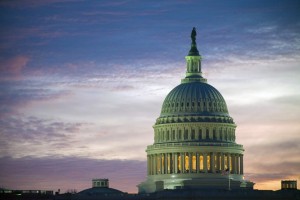 The last-minute debt deal reached by Congress on Oct. 17 reopened the government, extended the debt ceiling and averted a default.
The last-minute debt deal reached by Congress on Oct. 17 reopened the government, extended the debt ceiling and averted a default.
While many analysts and investors applauded the resolution, others argue it was not much of a resolution at all. Instead, the terms simply set up the next fiscal fight for sometime between December and January. Since this will mark the third debt ceiling battle in as many years, most Americans have grown tired of the politics. While there are many similarities between each budget fight, it is important to understand how the markets may be impacted by further uncertainty.
The most recent government shutdown was the third longest in history, only five days shorter than the 1995-96 shutdown that lasted 21 days and was the longest on record.
The anxiety over possible default caused the market, as represented by the S&P 500 Index, to slide approximately 4.1 percent from mid-September through Oct. 8. However, an abrupt rebound occurred from Oct. 8 through Oct. 17 that actually exceeded the initial decline.
This highlights the importance of maintaining investment discipline and resisting the temptation to panic or attempt to time the market. While many market indices have rebounded since an agreement was reached, the government shutdown still had a significant impact on our economy. In fact, the most recent shutdown is expected to drag down the fourth-quarter gross domestic product from 3 percent to 2.4 percent.
The current compromise funds government agencies until Jan. 15 while lifting the debt ceiling until Feb. 7. Jan. 15 was chosen because it coincides with the next round of sequestration cuts that were negotiated during the 2011 debt ceiling debate.
Additionally, the deal last week appoints a special conference committee to work on a 2014 budget and issue a report by Dec. 13. What is unclear is whether the bipartisan committee will be more successful than the 2011 committee whose difficulty negotiating resulted in the “sequestration” spending cuts in 2013.
The typical hot-button issues are expected to be on the negotiating table this time around, too. From requiring high-income retirees to pay more for Medicare, to reductions in the cost-of-living adjustments for Social Security, to taxing municipal bond interest and limiting the amount savers can accumulate in tax-deferred retirement accounts, there will be many details that will emerge as negotiations progress.
Estate tax laws and stretch IRAs may be on the table, too. Since many of the changes could impact your taxes and tax planning strategies, consider meeting with your CPA and financial adviser before year’s end to implement a proactive approach to your tax planning.
If the new committee is unsuccessful in establishing a plan for a reduction in spending, the next round of sequestration cuts may be a reality for 2014 and the debt ceiling may be reached. While some analysts suggest that “extraordinary measures” could be used yet again to push the debt deadline toward the end of February or even March, the uncertainty that it brings may cause additional volatility in the market and within the economy as consumers brace themselves for the next budget session.
In fact, according to Standard & Poor’s, “The short turnaround for politicians to negotiate some sort of lasting deal will likely weigh on consumer confidence, especially among government workers that were furloughed.”
The budget is something politicians will be wrestling with for years to come as we struggle to rein in spending and close funding gaps. Investors must be careful to avoid overreacting as the drama unfolds.
Kurt J. Rossi, MBA, is a certified financial planner practitioner and wealth adviser. He can be reached for questions at (732) 280-7550, kurt.rossi@Independentwm.com and www.Independentwm.com. LPL Financial Member FINRA/SIPC.









